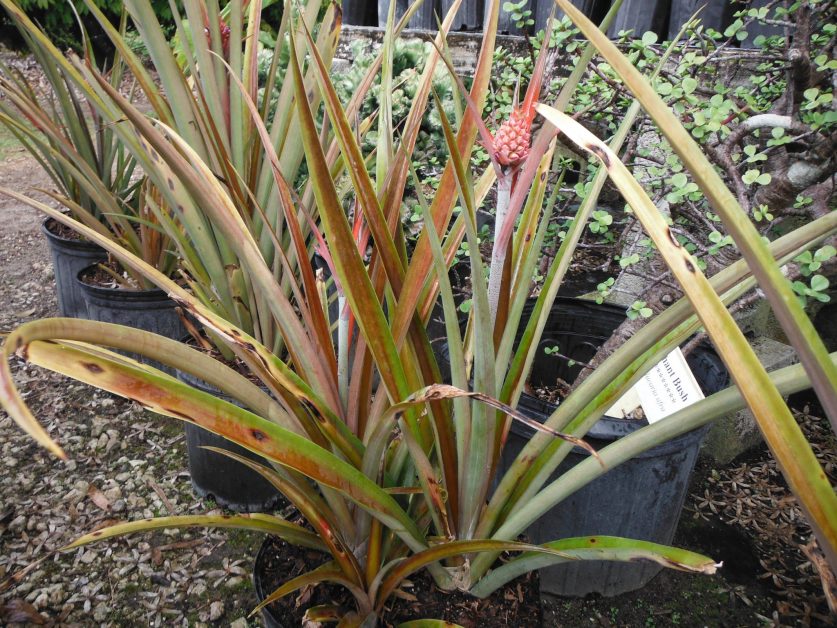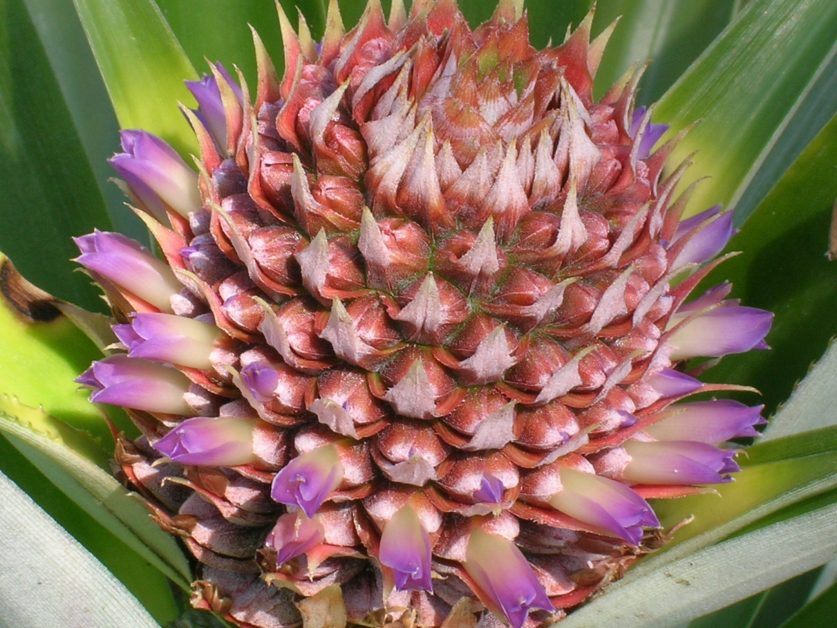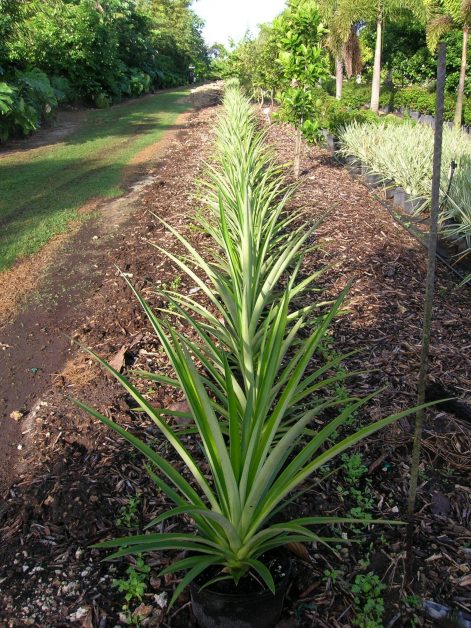Something to Brighten Up Your Landscape
You’ll probably agree that one of our favorite tropical fruits is ananas. No, we didn’t leave the ‘b’ off bananas. What most of the world calls ananas (usually pronounced ananás) is what English-speakers call pineapple. ‘Ananas’ came from the word that the Tupí, a Brazilian indigenous people, used for the plant. ‘Pineapple’ probably arose from an English translation of the term that Columbus coined while under the misconception that he was looking at a conifer. Perhaps Chris is entitled to a break; he made a bad grade in botany before pursuing a career in navigation.
By any name, though, the pineapple is a very interesting plant. People are generally surprised to learn that it is a bromeliad, and, in fact, it has the greatest economic significance of any bromeliad. The plant doesn’t just produce a popular fruit – actually an aggregate, a collection of berries that coalesce into a single body. It also contains the enzyme bromelain, which is processed into meat tenderizer, and its leaves provide a valuable fiber.
A century ago, pineapples were grown commercially in Miami-Dade County, generally in the Miami neighborhood known as Lemon City. But because the crop is slow to mature and because land values began to rise, the farmland was sold off for development. Currently Richard Lyons’ Nursery has an edible pineapple plant for sale, Ananas comosus (Smooth Cayenne Pineapple), which is very flavorful, but much smaller than the commercially grown pineapples produced around the tropics. As an aside, it may surprise some to find out that Hawaii is no longer a significant source of pineapples. Just as in southern Florida, land values in the islands made it uneconomical to farm pineapples commercially. By 2013, Hawaii-grown pineapples constituted just a tenth of a percent of the world’s production!
Richard Lyons’ Nursery grows a very nice ornamental pineapple, Ananas lucidus, a species native to northern South America. In full sunlight, the rosette of leaves turns a striking reddish-bronze color. (The plant, also known as curagua, can be grown successfully in lower light, but the leaves will go green.) At maturity, A. lucidus produces an attractive inflorescence that combines red, white and violet hues. The fibrous fruit that ultimately appears is decorative rather than edible, its skin blending shades of pink, yellow and red. Maturing to about 3 in. high, the fruit can remain on the plant for a long time while a new plant develops on its crown.
Because a full-grown A. lucidus is only 3-4 ft. tall, an eye-catching way to use it in the landscape is as a sort of ground cover, grouping a number of plants to emphasize their rich color and formal structure. Caring for the species is easy. It flourishes in well-drained soils, and once established has low watering demands except during its fruiting phase. This attractive plant is available in the nursery in 3-gal. containers.
- Ananas lucidus (Pink Pineapple)
- Ananas lucidus (Pink Pineapple)
- Ananas comosus (Smooth Cayenne Pineapple)
- Ananas comosus (Smooth Cayenne Pineapple)



